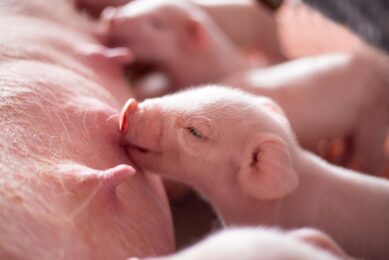Where are you in these comparisons?
Those of you who know me have learned that I collect farm figures like crazy – have done so for 40 years or more. They teach you so much about what is really happening on pig farms.
Now I am getting older and work more from home, I have more time to analyse what all these records from past and present clients reveal, especially from the past five years when things have been changing so quickly. Recently I spent a few days assembling these data into a comparative table using the figures collected by farm vists/ telephone talks/ and email ‘back-and-forths’ with clients as well as some long range advisory discussions. Some of the figures come from real experts – those I call my ‘Top Tenpercent-ers’ – I learn from them these days, not they from me.
©
Then there is a ‘Lowest One-third’ category – rather a lot of whom have needed advice.
©
Table 1 compares the two in physical performance terms; Table 2 puts some economics to them.
©
By the way, notice the better and more up-to-date and meaningful terms which I use increasingly frequently in my own work, rather than the outdated use of measurements like Food Conversion, % Mortality,©Average Daily Gain., Return on Capital etc. which don’t tell you enough and are sometimes misleading. Why you should use these new terms I have published over the years in books and articles.
©
Table 1. Physical performance differences between the top 10% and lowest one third (2004-2009).
©
©©©©©©©©©©©©©©©©©©©©©©©©©©©©©©©©©©©©©©©©©©©©©©©©©©©©©©©©©©©©©©©©©©©©©©©©©©© Top 10%©©© Bottom third©©©© Difference
Pigs weaned/ sow/ year©©©©©©©©©©©©©©©©©©©©©©©©©©©©©©©©©©©©©©©©©©30©©©©©©©©©©©©©20©©©©©©©©©©©©©©©©© -33%
Weaning Capacity (kg)©©©©©©©©©©©©©©©©©©©©©©©©©©©©©©©©©©©©©©©©©©©©502©©©©©©©©©©©313©©©©©©©©© ©©©©© ©-61%
SPL* (litters)©©©©©©©©©©©©©©©©©©©©©©©©©©©©©©©©©©©©©©©©©©©©©©©©©©©©©©©©©©5.8©©©©©©©©©©©3.6©©©©©©© ©©©©©©©©© -38%
Pig weight sold/ sow/ year (tonnes)©©©©©©©©©©©©©©©©©©©©©©©©©©2.4©©©©©©©©©©©1.8©©©©©©© ©©©©©©©©© -25%
MTF** (kg)©©©©©©©©©©©©©©©©©©©©©©©©©©©©©©©©©©©©©©©©©©©©©©©©© ©©©©©©©©©© 400©©©©©©©©©©©300©©©©©©©©©©©©©©©© -25%©©©©
AMF*** (born alives)©©©©©©©©©©©©©©©©©©©©©©©© ©©©©©©©©©©© ©©©©©©©©©©0.7/12©©©©©©1.1/9.6©©©©©©©©©©© -86%
* Sow Productive Life in litters acheived.
** Meat sold per Tonne of (weaning- slaughter) Food.
*** Absolute Mortality Figure.
©
Table 2. Some econometrics from the above differences.
- The lowest third producers, as is to be expected, were more modestly capitalized/pig, and the sum invested turned out to be around 60% less than the experts. This must have been much too low and if more had been spent in key areas to raise it to 35% less, this would have reduced the©physical performance gaps by, I estimate, 25% to as much as 40% in some clear cases, such as a failure to upgrade ventilation. Used well, a little extra investment like this would have increased gross margin of the bottom third clients by at least 50%. Scarce money used properly – rather than not being used at all in over-misguided attempts to keep costs down!
© - The difference in income from the MTF obtained worked out at 38-46%. Quite a bit of this was due to sub-standard genetics, often from the lower capitalized producers attempting to breed their own female replacements.
© - The huge difference in AMFs©(Actual Mortality Figure,which this better method of measuring % preweaning mortality brings out), was largely due to staff not being sufficiently present at farrowing.
Overall
The differences in Table 1 reduced gross margins – including the savings from lower funding costs of most of the lower category producers – by 270- 309%
The differences in Table 1 reduced gross margins – including the savings from lower funding costs of most of the lower category producers – by 270- 309%
©
©This is a massive gap which must threaten their survival, and while the average producer may just remain in business, he remains at the mercy of conditions largely beyond his control, while the best in the business will make a lot of money in future, come what may.
©
Where are you on this performance ladder?











